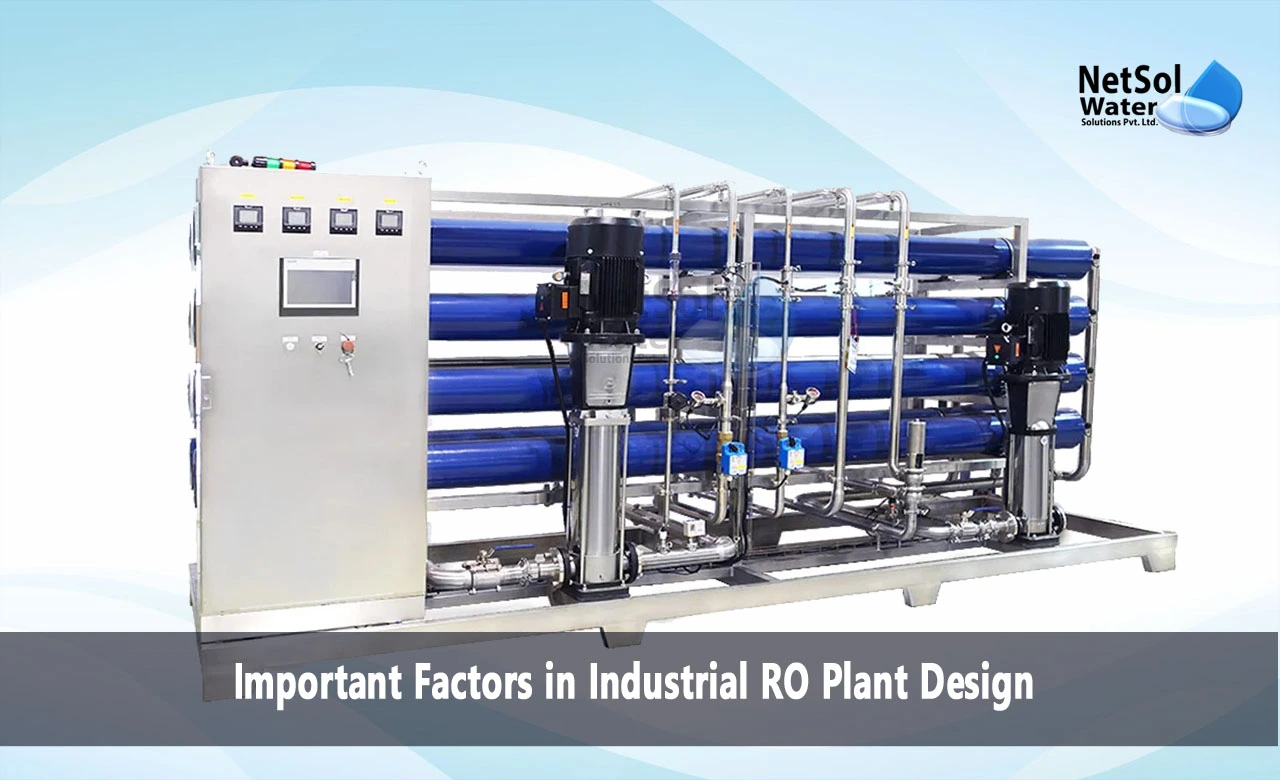What are Important Factors in Industrial RO Plant Design?
As water scarcity issues escalate and discharge regulations tighten around the world, more industrial facilities are investing in advanced treatment solutions like reverse osmosis (RO). An industrial RO plant enables a manufacturing operation to utilize lower-quality alternative water sources like brackish groundwater, municipal effluent, or even seawater by removing dissolved salts, particles and other contaminants. However, designing a reliable, efficient industrial RO plant requires careful evaluation of numerous critical factors.
Simply sizing RO membrane elements based on desired permeate flow rates is grossly insufficient. Improper design leads to fouling issues, frequent cleanings, suboptimal performance and excessive operating costs that negate the benefits of RO treatment. We'll explore some of the most important design factors that must be thoroughly assessed during the engineering phase for a successful industrial RO plant.
Raw Water Source Characterization
The most fundamental driver impacting all other design decisions is the raw water source's quality characteristics. Whether the feed supply originates from groundwater, surface water, municipal effluent or industrial discharge streams, extensive data on water analysis and testing is required.
Key parameters include:
• Total dissolved solids and individual ionic species
• Particle/turbidity levels and size distributions
• Natural organic matter and biodegradable organics
• Microbiological presence and pathogens
• Temperature, pH and alkalinity
• Presence of heavy metals, hydrocarbons or other contaminants
• Concentrations of scaling compounds like silica, barium, strontium
• Seasonal fluctuations and variability of all above factors
This information on raw water informs the degree of pretreatment required, membrane salt rejection needs, materials considerations, residual properties and all other subsequent design factors. Inadequate raw water characterisation is a primary cause of industrial RO plants issues.
RO Membrane Selection and Configuration
Based on the raw water analysis, RO membrane types and system configurations must be selected for optimal performance, longevity and economics. This highly specialized process involves:
• Evaluating target permeate water quality requirements
• Identifying problematic compounds or characteristics requiring specialized membrane
• Determining operating parameters like recovery rate, conversion, pressure
• Establishing staging, pass arrangement (single, double, etc.), array sizing
• Choosing membrane model, size, and projected operating life/replacement rates
Membrane manufacturers provide software allowing projection of system performance and operating parameters. Careful evaluation compares capital and lifecycle operating costs for various membrane types and configurations to find the most cost-effective solution meeting all treatment targets. Considerations span materials, elements per vessel, stagingeffects on recovery, and more.
Pretreatment Design
No matter how advanced the RO membrane capabilities, insufficient pretreatment inevitably leads to fouling, scaling, and deteriorating performance over time. The pretreatment system is designed specifically to protect downstream RO membranes from the raw water contaminants.
In addition to conventional granular media filtration, common industrial RO pretreatment processes include:
• Chemical treatments (chlorination, coagulation, pH adjustment, antiscalants)
• Ion exchange softening or iron/manganese removal
• Clarification and sedimentation for high turbidity removal
• Activated carbon or advanced oxidation for organics removal
• Cartridge filtration
• Ultrafiltration (UF) or microfiltration (MF) membrane pretreatment
Designing the optimal pretreatment train involves strategic application of the above processes and consideration of factors like chemistry, costs, residuals handling, future expansion and more. Computational Fluid Dynamics (CFD) modelling can optimize pretreatment processes and contactingconsistency. A competent, experienced design team is crucial.
Energy Recovery and Process Optimization
Since RO operates at extremely high pressures (600-1200 psi), substantial energy expenditures are required for pumping feed water through the membrane elements. Consequently, industrial RO plants incorporate energy recovery devices like:
• Isobaric energy recovery devices using ceramic technology
• Turbine or pelton wheel energy recovery
• Work exchanger energy transfer using direct displacement
By capturing and transferring energy from the high-pressure concentrate stream exiting RO membranes, these devices reduce the feed pumping requirements by 25-60%, realizing major energy savings. But optimizing pressure staging, plumbing configurations, and peripheral pumping arrangements is critical to maximize energy recovery performance.
Beyond just energy recovery, RO plants require comprehensive process optimization evaluating areas like:
• High-efficiency pumping (multi-stage centrifugal, positive displacement, VFDs)
• Advanced membrane array piping designs with proper removalHydraulic analysis
• Automated controls and process monitoring instrumentation
• Equipment materials and metallurgy to prevent corrosion/degradation
• Chemical dosing and CIP (clean-in-place) procedures
• Residuals treatment, dewatering and disposal strategies
It's this extensive engineering expertise in designing, modelling and integrating all equipment and processes that separates a robust, optimized industrial RO plant from an inefficient, troublesome system.
Conclusion
While the core reverse osmosis membrane separation process may seem straightforward conceptually, designing a reliable, cost-effective industrial RO plant is an extensive multi-disciplinary undertaking. Thorough characterization of the raw water supply sets the stage, but optimal membrane selection, pretreatment train design, energy recovery, and complete process optimization and integration transform an RO plant into a valuable long-term asset.
By carefully evaluating and engineering each critical design factor based on first principles and proven approaches, industrial manufacturing facilities can confidently incorporate RO technology. This provides access to alternative water sources, recycle process streams, and achieve environmental compliance - all while meeting stringent operational water demands both today and well into the future.
Netsol Water is Greater Noida-based leading water & wastewater treatment plant manufacturer. We are industry's most demanding company based on client review and work quality. We are known as best commercial RO plant manufacturers, industrial RO plant manufacturer, sewage treatment plant manufacturer, Water Softener Plant Manufacturers and effluent treatment plant manufacturers. Apart from this 24x7 customer support is our USP. Call on +91-9650608473, or write us at enquiry@netsolwater.com for any support, inquiry or product-purchase related query.



